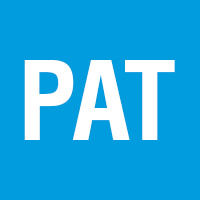The consequences of failing to take appropriate precautions to ensure the safety of electrical systems and their safe operation by staff are significant.
Electricity is vital to the day to day operation of almost all businesses and a fault or loss of supply can have serious safety implications and incur financial costs:
With the safety implications and financial costs associated with serious incidents of this nature being so significant, the effective management of electrical safety in the workplace is a vital consideration for any business.
Unexpected damage or repairs can cause businesses to close or suffer significant financial losses, possibly leading to reputational damage and loss of business, after failing to comply with safety regulations. Keeping up to date with the safety regulations and requirements, as well as other measures, is vital to keep your employees and customers safe and aware of the electrical safety guidelines and risks.
Electrical Duty holders are accountable for handling the electrical safety of their/your business. Therefore, awareness of electrical safety is imperative. Failure to do this can lead to serious consequences under health and safety legislation, especially where these lapses or incidents have resulted in harm or injury and even, in some circumstances, death.
Complying with the requirements of the Electricity at Work Regulations 1989 (EaWR) can help reduce and prevent risks happening in the future.
Having an understanding of the risks that your business is likely to face is a key step towards business success.
In today’s business environment where safety-related costs can be the difference between reporting a profit or a loss.
Here are a few steps that you can take to comply with the requirements of the Electricity at Work Regulations (EaWR).
During work occasions, the HSE has provided examples of the health and safety issues that are most crippling to British industry.1
Almost one fifth of reportable falls from height in the workplace are from ladders. Maintain your ladders and periodically train your employees on safe ladder procedures.
About 1 in every 12 recordable injuries in Britain’s workplaces is the result of a fall. Ensure your employees know the difference between safe and unsafe work at height.
Just one simple machine guard can prevent mutilation and save countless lives.
Implement simple rules in order to safeguard employees, such as keeping people away from moving vehicles.
Asbestos is still a threat that your employees need to know how to avoid or safely contain.
Proper extraction and suitable masks can significantly reduce your workers’ risk of developing asthma from paint vapours.
Implement dust control measures to save employees from irreversible lung disease.
Identify measures to eliminate or reduce the risk of hand-arm vibration syndrome.
Workers need access to clean facilities such as toilets and kitchen areas. Filthy facilities breed germs and diseases and can result in subsequent fines for the employer.

Designed for use when undertaking routine periodic inspection and testing in order to produce a report on the condition of an existing installation. The EICR will normally consist of a number of pages covering client information and details of the installation. It will also detail the reason for and the extent of any limitations of the inspecting and testing, along with a summary of the condition of the installation and any observations and recommendations. A recommendation may require immediate attention, where a dangerous situation is present, be potentially dangerous or require improvement. Dangerous and potentially dangerous situations will render a report unsatisfactory.

Designed for use when verifying and testing a new installation or an alteration/addition to an existing installation where new circuits have been introduced. The EIC will indicate the responsibility for design, construction, inspection and testing. The EIC can also be used when carrying out remedial work to an observation from an EICR.

Designed for use when an addition to an electrical installation does not extend to the installation of a new circuit and may be used for each circuit that is altered or extended as an alternative of a socket-outlet or similar accessory, or the ‘like for like’ exchange of an item of electrical equipment such as a light fitting. The Minor Works Certificate can also be used when carrying out remedial work to observations from an EICR.

Effective maintenance of electrical equipment must be maintained to help prevent danger to employees and customers. It is highly recommended that a record/ label be used as a management tool for monitoring and reviewing the effectiveness of the maintenance schedule and to demonstrate that a robust maintenance schedule exists.

Our compliance management and electrical audit service can benefit your business by assuring staff and clients or customers that they are in a safe environment complying with all relevant Electrical Regulations. Awareness of risks and consequences can help prepare for future unexpected incidents and how to tackle them in the correct way.
Once any risks have been identified including reviewing and cleansing your historic claims experience, our experts will determine which risk management best practice is most beneficial for your business. By conducting risk management audits and improvement programmes we will remove/reduce your risk exposures by implementing preventative measures.
This results in reduced business disruption, a safer work place and puts your business in a better defensive position against future claims. By having this detailed understanding of your business, it also enables us to present a fair picture of your risk to insurers to help get you the most competitive premium.
Have no regrets and make sure safety comes first in any circumstance. Effective supervision of electrical safety can lead to safe premises, so it is important to take this into consideration. If this action is not applied, the safety of staff may be in danger and may also lead on to damaging financial costs.